
TARGET 161109
MOSCOW'S MODERN VERSION
OF BIG BROTHER
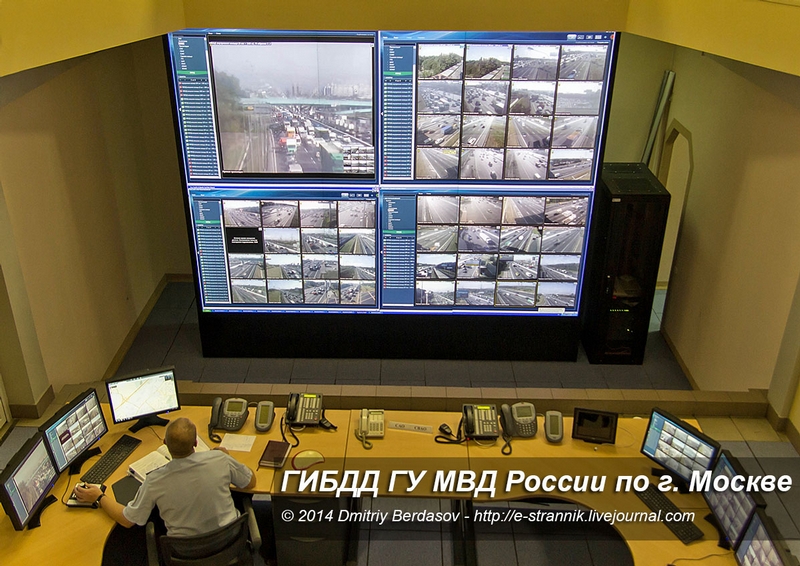
"Big Brother" is a fictional character and main symbol for the lack of freedom in a society in George Orwell's novel, "1984". He is ostensibly the leader of Oceania, a totalitarian state wherein the ruling Party wields total power "for its own sake" over the inhabitants. In Oceania, every citizen is under unending surveillance by the government, mainly by telescreens. The people are constantly reminded of this by the slogan, "Big Brother is watching you". Today, the term "Big Brother" is a synonym for abuse of government power, particularly in respect to civil liberties, often specifically related to governmental use of technological mass surveillance.
We see this same technology being used today by governments who monitor our travel movements, use cameras to track cars, people and their activities. In free countries, this survailence technology is reportedly used for solving crimes, getting emergency vehicles to accident scenes, predicting terrorist activities, and hopefully, for only such things as are beneficial to the population. In non-free countries, well... 1984 was 32 years ago as of this week's Target of the Week. Technology has been advancing at an astounding rate.
Perhaps the finest example of this type of technology is being used by the city of Moscow, Russia to make traffic safer, get rescue and emergency vehicles to accident sceens faster, and save lives. That is what takes place in the room pictured above, and that room and activities within it are your target for this week.
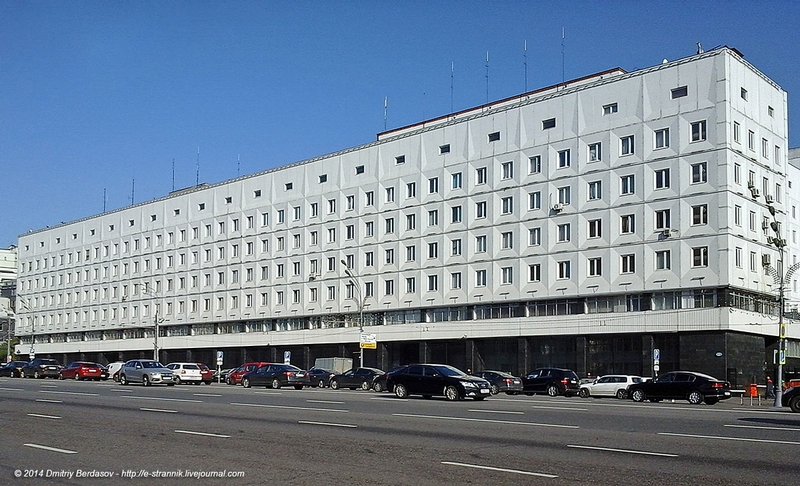
This somewhat imposing building is the headquarters of the The Government Traffic Inspection Department (Gosudarstvennaya Avtomobilnaya Inspektsiya) - or "GAI" for short.

Inside, along with normal offices, there are many rooms (nobody outside the building tends to know how many) like the one pictured above. The ramp which leads between the floors is visible in the doorway, shown above. There are video feed stations all around the room, A center island that overlooks all the activities in the room is where the decision-making
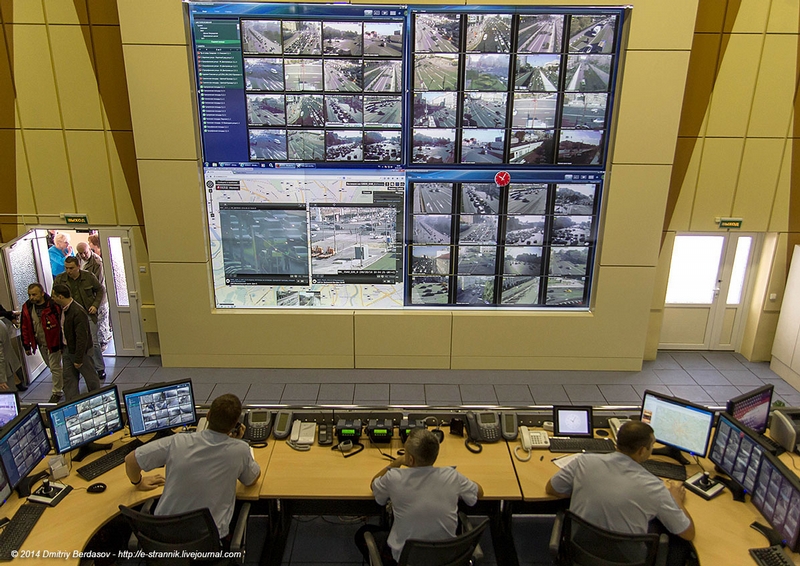
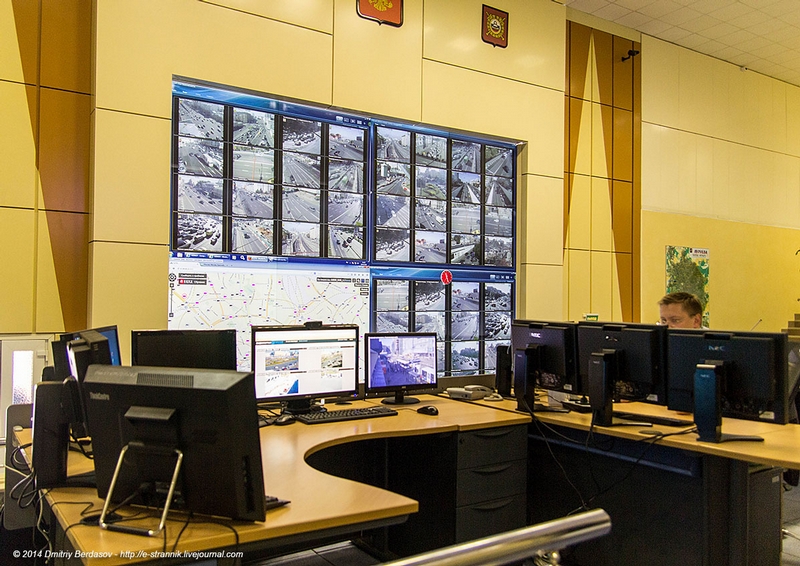
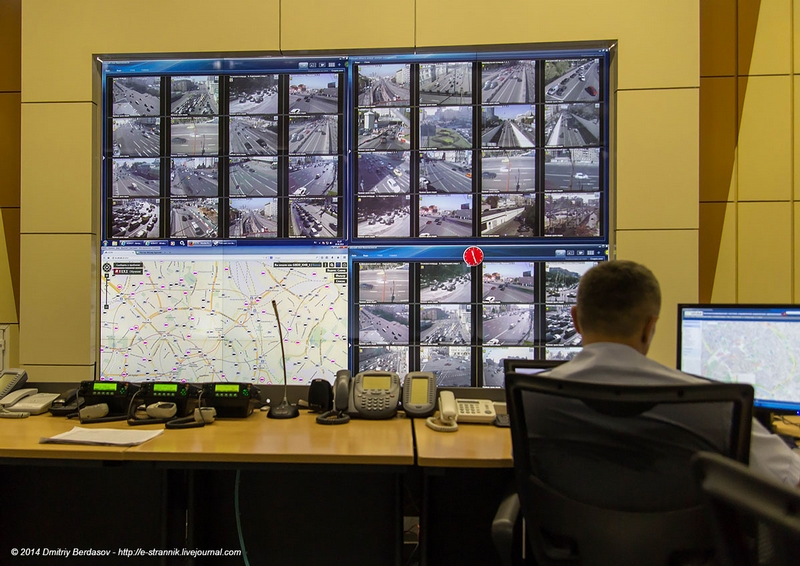
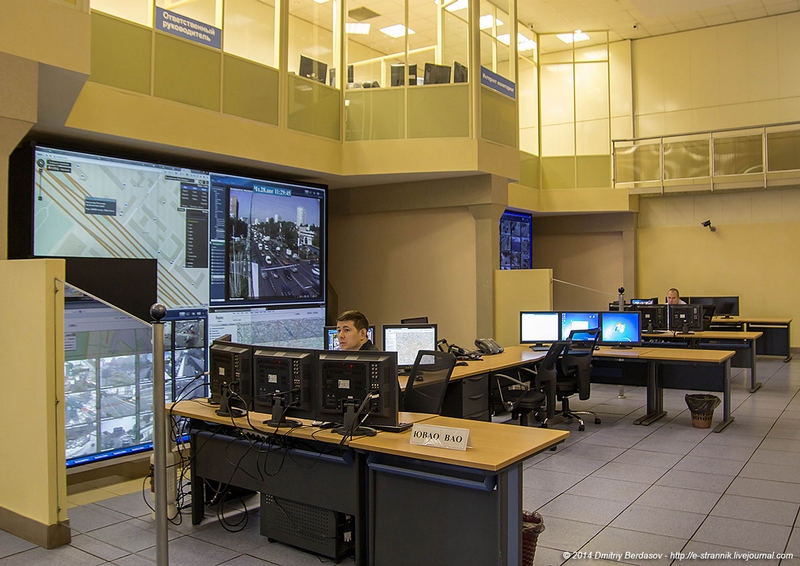
The monitoring stations
Around the sides of the room, there are monitoring stations with police officers monitoring just about every place in the city where accidents, crimes, or other activities take place.
The first ten analogue (non-digital) cameras were installed into the "most popular" (presumably, most dangerous) Moscow intersections by communist police in 1970. Years passed, the Communist government fell, and this building became the center for traffic control and emergency/rescue alert systems. All the cameras feeding information to the center are now fully digital - all 130 thousand of them.
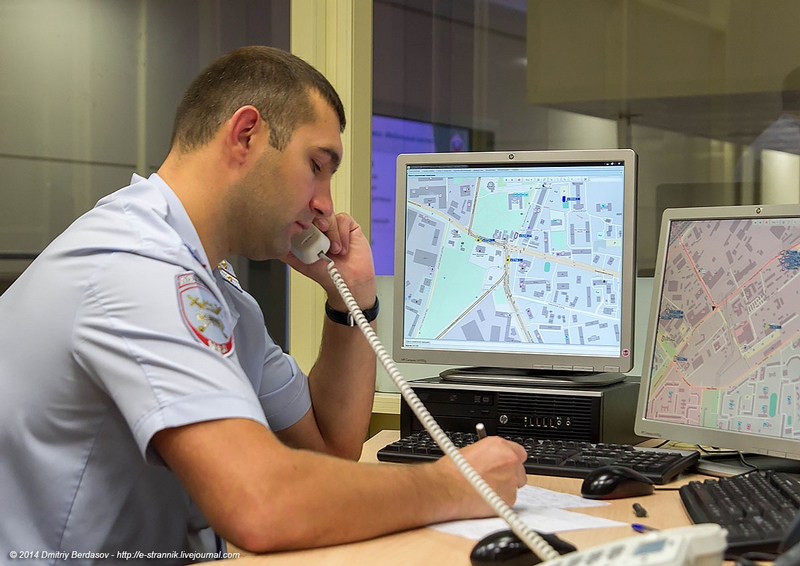
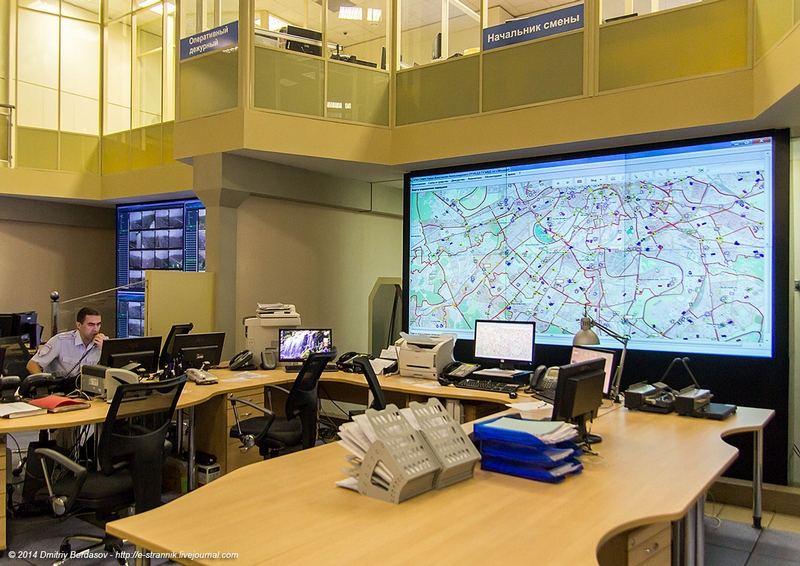
When an alert of interest is found, it goes to a desk where the operator finds and displays the location, first on his computer screen, then to the large screen which will be seen by the decision makers.
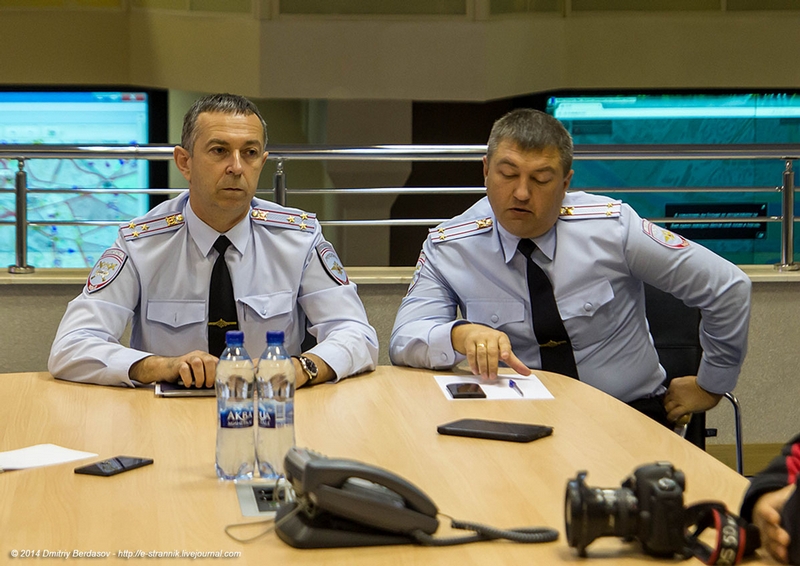
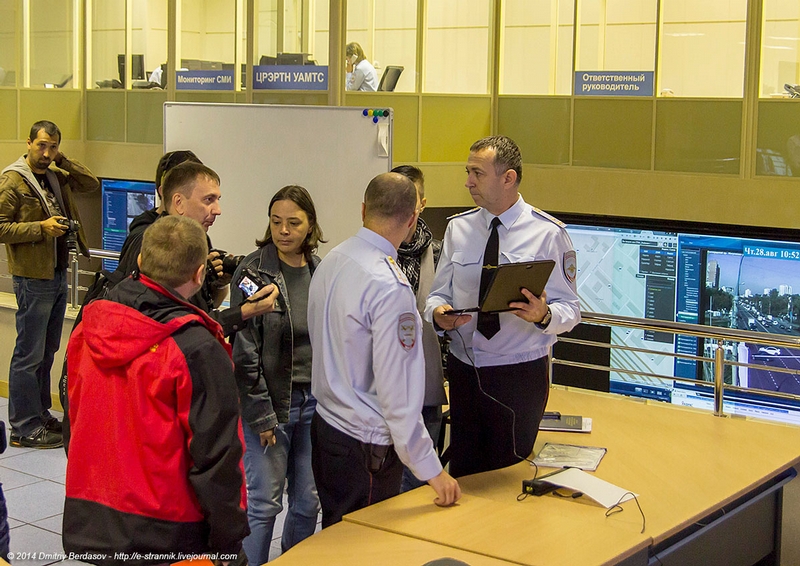
The decision makers gather quickly and decide what must be done, who must be notified, and how serious the emergency is. The proper notificications are made and rescue or other police action is on its way. This process is completed long before anyone even has the time to call in an accident report. It is estimated that many lives have been saved by this branch of the police.
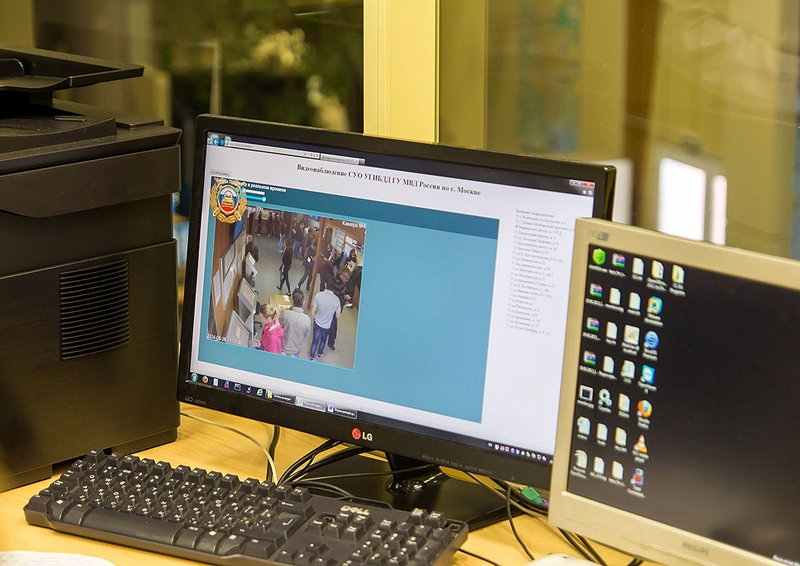
There is a saying in Russia: "The more things change, the more they stay the same.". If you have any doubt that this IS the modern version of "1984", the fact is that, just as is being done in most of large cities around the world, the cameras are not only focused on dangerous intersections. They also get focused on other places of police and governmental interest. Cameras at Automatic Teller Machines, at banks, in stores, hotels, offices and even the dash cams of police cars can be picked up here in real time. The "services" in this building do not just follow traffic and crime locations. They also track internet messaging services that allow people to communicate with each other. This is authorized so they can track dangerous personal, terrorist, and otherwise private situations in real time. It's all public signals so why not? (That's right - anything you put on Facebook or other message services anywhere in the world can almost magically appear on one of the screens you see in the pictures above, or in any other such department in other countries - ours included.)
FEEDBACK MAP
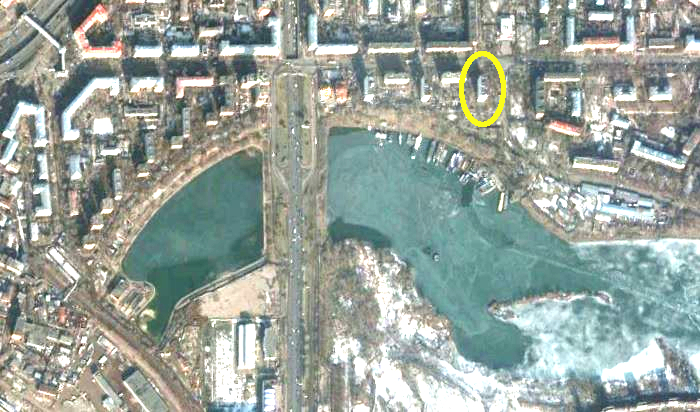
If you got impressions for which this feedback is insufficient, more information,
pictures and videos can be found at the following web sites:
Wikipedia
Expat Guide, Moscow (on-line book)